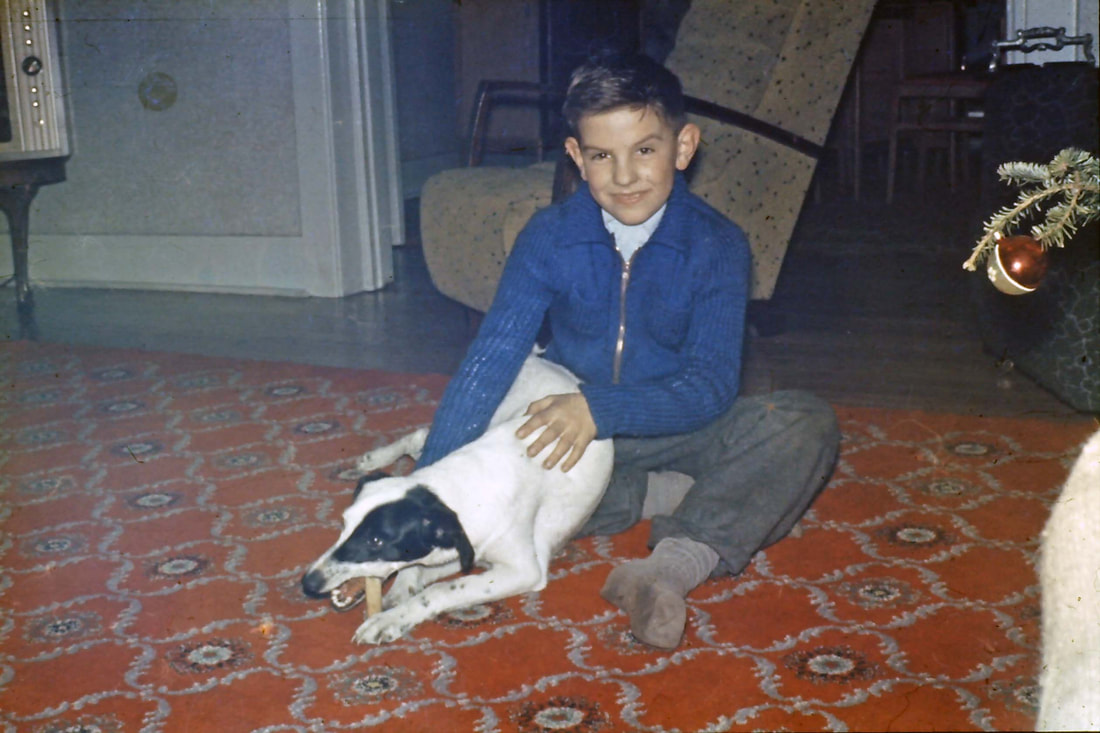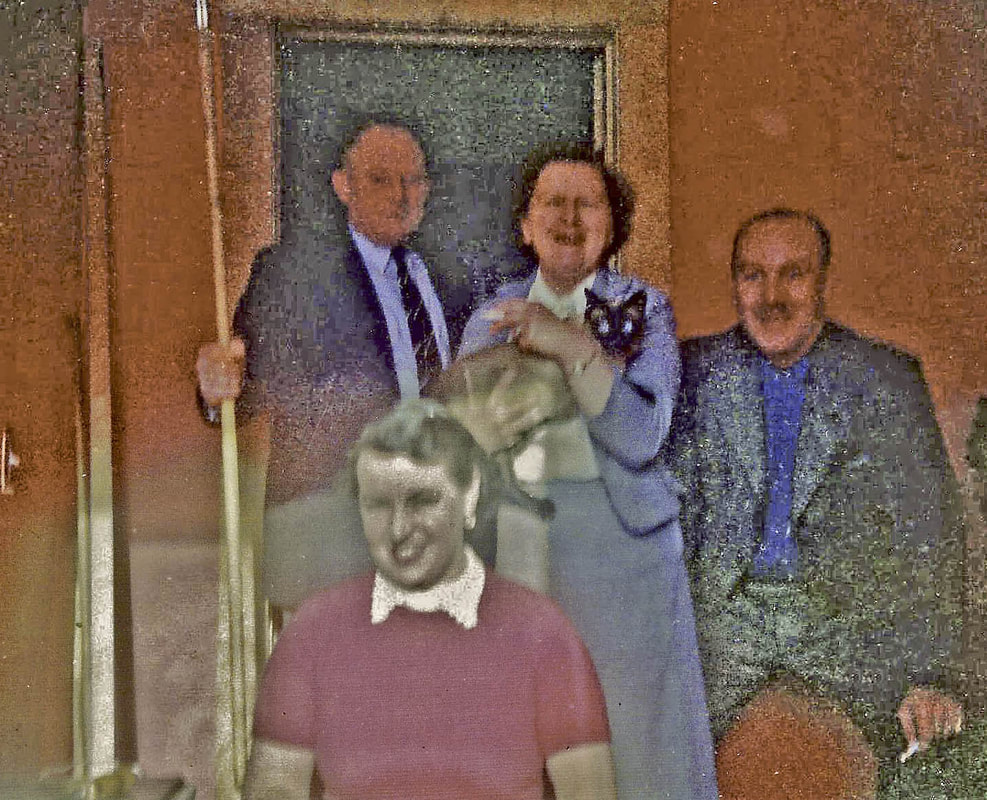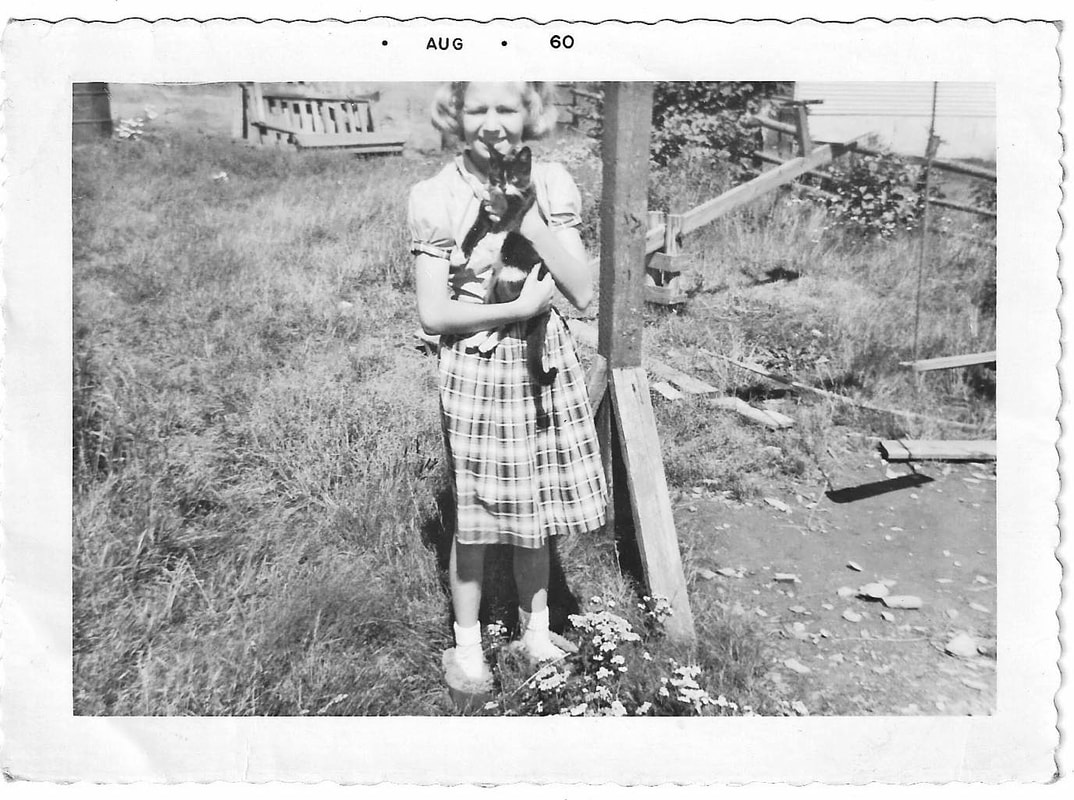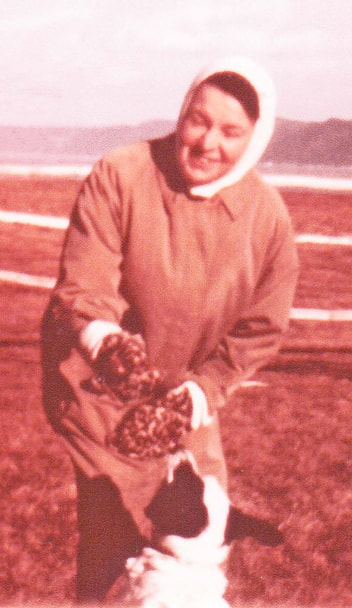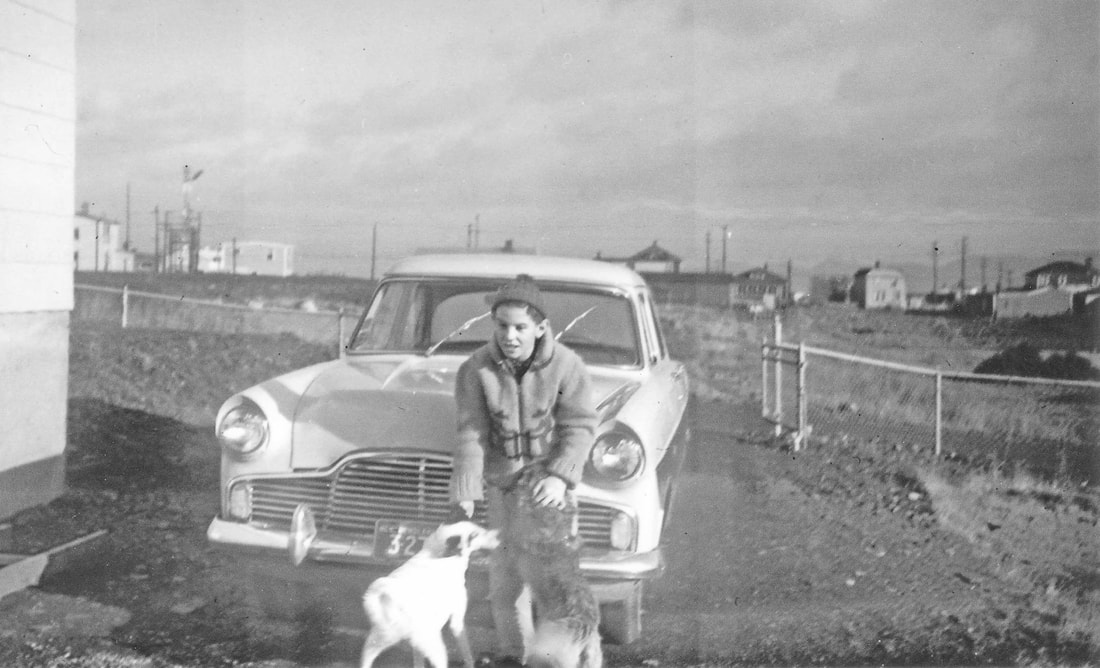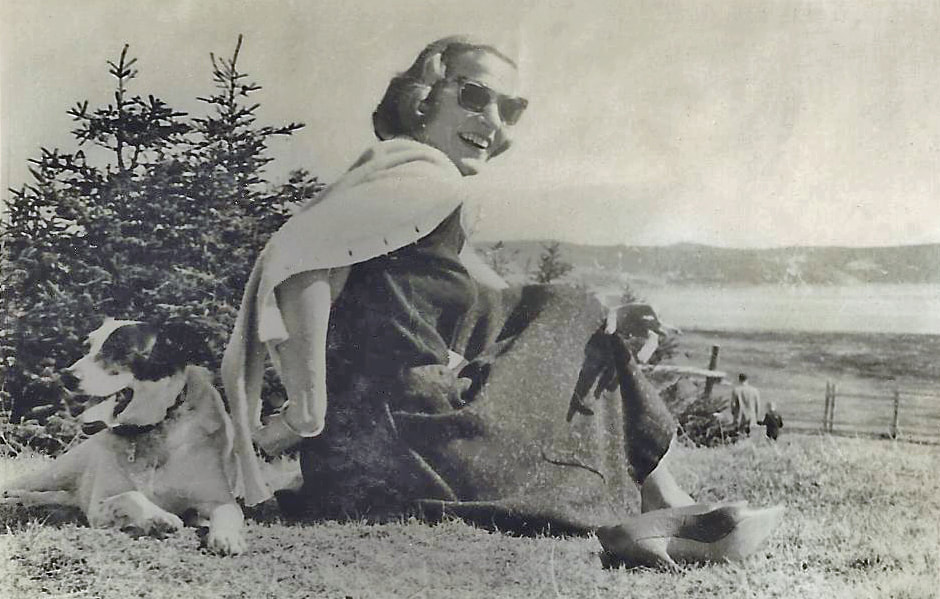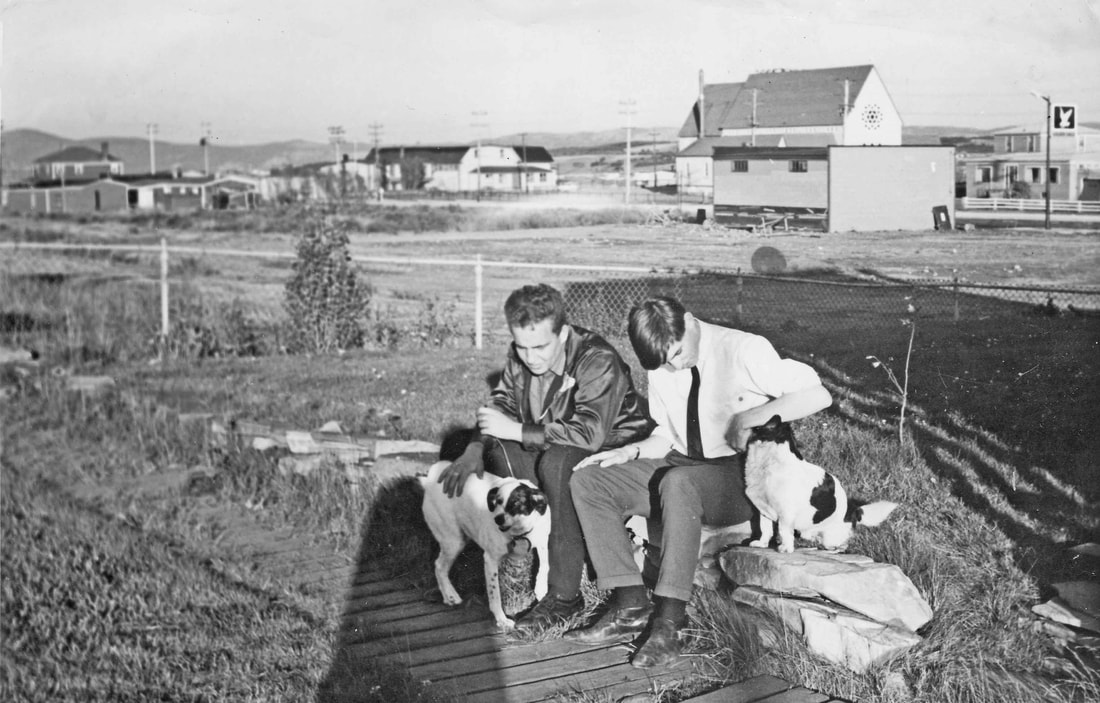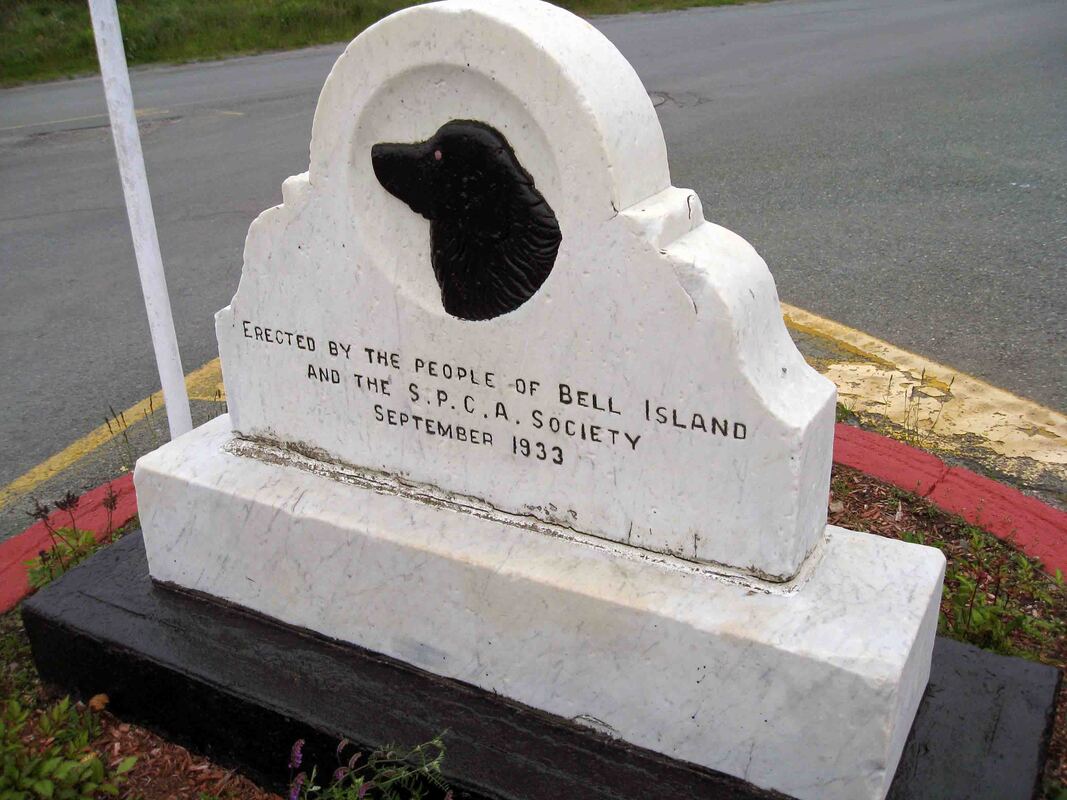EXTRAS
PERSONAL EXPERIENCE STORIES
PERSONAL EXPERIENCE STORIES
DOGS & CATS OF WABANA
by
Dave Careless
April 20, 2024
by
Dave Careless
April 20, 2024
ABOUT THE AUTHOR
Dave Careless was born March 13, 1948 in Rotherham, in the coal-mining district of South Yorkshire, England. His father, Tom Careless, was working in the wages office of the National Coal Board at Aldwarke and Silverwood pits when he received a job offer in the autumn of 1957 to come to Bell Island to work at DOSCO's Main Office in charge of production and projections, determining how much ore was being produced and how much was required to fill the order books. Tom came on his own to get the lay of the land and was quickly promoted to Assistant to the General Manager (a position he held until the mines closed in 1966). In March of 1958, 10-year-old Dave and his mother, Jennie, arrived in Newfoundland. This is the story of Dave's memories of some of the dogs and cats he knew during his eight years living on Bell Island before the mines closed. He is pictured above with his puppy, Patch, during Christmas 1958. Unless otherwise credited, photos are courtesy of Dave Careless. (You can read more about Tom Careless in the "C" section of the "People" page on this website. You can see more Careless photos on the "Photo Gallery" page.)
INTRODUCTION
During the years that I was living on Bell Island and growing up in Wabana, from the late 1950s until the mid-1960s, the population of Bell Island grew steadily until it peaked at 12,281 in 1961. It began to dwindle after No. 4 Mine closed down in 1962, leaving the main slope, No. 3, as the only operating slope making revenue for the company. As we well know, even this became uneconomical after a time, leading to eventual complete closure of mining operations at the end of June, 1966. This was recognised as the final act of DOSCO, under the auspices of its new owner, Hawker Siddeley Canada Ltd., pulling the rug out from under Wabana, so to speak.
Closure of the mines obviously led to the forced relocation of anybody who had been dependent on them for their livelihood, and as such, the population of Bell Island fell away at an alarming rate. Some families relocated to Labrador, where there was mining work available, again producing iron ore, but the majority of persons that had been employed at Wabana travelled much further afield to find viable jobs, most of them joining the large labour force working in skilled and unskilled jobs in the manufacturing industry centered around Galt and Cambridge, Ontario, and the general region west of Toronto, where there were plenty of large factories always in need of a steady work force.
As families of an age still reliant on employment, especially those with children to raise, left the island for good, as opposed to older retired persons who had lived there all their lives and had no intention of leaving, amongst the families that had simply no choice but to leave, I've often wondered how many domestic pets survived that upheaval. A lot of them likely would never have gotten the opportunity to relocate with the families that had owned them. I know this from first hand experience, and it still upsets me to this day, almost sixty years later!
Not only were there domestic pets on the island, there were also colonies of feral cats and stray dogs, dependent on handouts of the occasional dish of food or table scraps from benevolent citizens. I don't recall them being all that visible in Wabana itself, except perhaps for the odd mangy-looking dog passing through Town Square, or sniffing its way along the sides of the road as it headed towards West Mines. But I think in the more densely populated areas of the town, such as The Green or West Mines itself, you would be much more likely to come across a few dogs running wild together, or a group of feral cats living rough and seeking shelter wherever they might be lucky enough to find it.
Closure of the mines obviously led to the forced relocation of anybody who had been dependent on them for their livelihood, and as such, the population of Bell Island fell away at an alarming rate. Some families relocated to Labrador, where there was mining work available, again producing iron ore, but the majority of persons that had been employed at Wabana travelled much further afield to find viable jobs, most of them joining the large labour force working in skilled and unskilled jobs in the manufacturing industry centered around Galt and Cambridge, Ontario, and the general region west of Toronto, where there were plenty of large factories always in need of a steady work force.
As families of an age still reliant on employment, especially those with children to raise, left the island for good, as opposed to older retired persons who had lived there all their lives and had no intention of leaving, amongst the families that had simply no choice but to leave, I've often wondered how many domestic pets survived that upheaval. A lot of them likely would never have gotten the opportunity to relocate with the families that had owned them. I know this from first hand experience, and it still upsets me to this day, almost sixty years later!
Not only were there domestic pets on the island, there were also colonies of feral cats and stray dogs, dependent on handouts of the occasional dish of food or table scraps from benevolent citizens. I don't recall them being all that visible in Wabana itself, except perhaps for the odd mangy-looking dog passing through Town Square, or sniffing its way along the sides of the road as it headed towards West Mines. But I think in the more densely populated areas of the town, such as The Green or West Mines itself, you would be much more likely to come across a few dogs running wild together, or a group of feral cats living rough and seeking shelter wherever they might be lucky enough to find it.
CATS
I can't recall all that many cats in Wabana that were actual pets, except for just a few. The ones I can recall were definitely the lucky ones, as they had owners that cared for them and as such could pretty much guarantee that they would not have to scrounge around in back alleys looking for sustenance. Dr. Jim Wilson and his wife Brenda, who had a flat adjoining his doctor's surgery in the lower end of Town Square, just down from Charles Cohen's store, had two cats for a time, typically given somewhat silly names by Brenda. They might well have acquired 'Toggywogs' and 'Tiddlebangs' when they lived in their previous rented accommodation in a house on Ten Commandments Range, opposite No. 3 Yard, but they most certainly had them during their time on Town Square. When Jim and Brenda Wilson eventually left Bell Island in 1962, sailing to Europe on an ore carrier that had graciously offered to take their Envoy Epic station wagon along for the ride as well (!), I'm quite certain that the two cats were not aboard. I've often wondered if they were passed on to the Kennedy family who lived in the upstairs flat, but I'm not sure. Sadly, they were likely left to fend for themselves, a situation not unlike many hundreds of other domestic pets on the island unfortunately found themselves in as the population slowly dwindled.
A photograph taken, I think, in the Town Square surgery of Dr. Jim Wilson, who is pictured on the left, holding some sort of lengthy stick, an extra long snooker cue, perhaps?! His wife Brenda is in the front of the picture, and to the right is H.S. (John) Haslam, General Superintendent of mining operations at Wabana for a time. In the middle, holding the Haslam's Siamese cat, Simon, is the diminutive Muriel Haslam, with an ever-present cigarette between her fingers! I'm not sure what the occasion was, but I'm pretty sure that Doc Wilson wasn't averse to carrying out the odd bit of veterinary work on the side whenever it was required, which probably explains the presence of a very attentive Simon in the picture, safe in Muriel Haslam's arms!
Back in the day, our very own Gail Hussey-Weir had a cat, well, sort of. Gail reckons the black and white kitten she named "Trixie," and is holding in the August 1960 photograph seen above, was one of a litter of feral cats born in her grandfather John Dawe's lumber yard on Armoury Road. She desperately wanted to keep Trixie, but her mother refused to entertain the idea. At the time, Gail's father was losing time at work due to illness, so her mother had to get a part-time job to keep food on the table. The addition of another mouth to feed, even if it was just a cat, was unfortunately a non-starter. Gail however admits that she did steal the odd saucer of milk for it from the family pantry when her mother wasn't looking! (Photo courtesy of Gail Hussey-Weir.)
DOGS
Having a family dog ourselves during our time spent in Wabana made me much more aware of other dogs living in our particular neighbourhood as opposed to cats, which were rather less visible, as they spent considerably less time outdoors than family dogs did. Having owned a number of cats and dogs throughout my lifetime, I can confirm that cats traditionally spend more time on window ledges looking outside, whereas dogs spend a lot more time walking their neighbourhood with their owners, either on the end of a leash, which is the norm these days, or running loose and free, which was not at all out of the ordinary in Wabana back in the '50s and '60s. Indeed, it would have been highly unusual to see a dog being walked on a leash back in those days, just as 'picking up' after your dog, an accepted thing to do in today's society, would have been something that would never have even been considered back in that era! It's a fact that not quite everything was better in the "good old days!"
|
A chilly and windy Sunday afternoon on the cliff tops at Long Harry on the east side of the island, with the mainland on the other side of Conception Bay visible in the distance, as our family dog, Patch, is attempting to steal one of Brenda Wilson's fake fur gloves in order to get her to chase him to retrieve it! The photograph dates from approximately 1961.
|
PATCH
I'm not quite sure where our dog was actually from, as he was a "gift" of sorts, slid into our kitchen by Dr. Jim Wilson one day not long after we'd moved to Bell Island and were living in the large house on the south east corner of Bennett and Bown streets. He was just a young pup, one of a litter that presumably had been present at a house where "Doc" had made a house call earlier in the day; he had obviously thought it would be just the perfect companion for a ten-year old boy who had just arrived in Wabana and was still in the throes of getting readjusted to a new environment, new school, new friends, etc. To put it simply, he couldn't possibly have made a better choice, and I will always be grateful to "Doc Wilson" for taking that step. We called him Patch as he was all-white except for black ears and a large patch of black fur over his left eye and extending half of the way down his muzzle. I've already written rather extensively about him in my "Around the Block" piece already on Gail's historic-wabana.com web site, and don't want to repeat myself here, except to say that Patch was an exceptional animal in many respects. Sharing those eight formative years with him from age ten till I was eighteen definitely had a positive effect on my life with respect to how I view animals and how I abhor any form of cruelty towards them.
Patch liked nothing better than running around and around in the backyard, carrying a stick in his teeth, and encouraging you to chase him to try and take it off him. The same would apply to your gloves, the gloves of the garbage man, in those days Ambrose 'Hopper' Dean, or your toque if he had the opportunity to whip it off your head! His true pleasure was something that we've since learned you should never ever give a dog, and that is chocolate. An Aero bar would send him into paroxysms of delight, and my father would regularly bring him one if he happened to stop off at Fleming's Drug Store on Town Square on the way home from a Kiwanis Club meeting. Thankfully, it never seemed to have any noticeable adverse effect on him. If my mother was on her way to an afternoon Bridge game at somebody's house, and he was following her at a safe distance, she knew that the only surefire way to get him to go home was to stop in at the Paradise Cafe on Bennett Street and buy a chocolate bar, which he would then take home with him and eat in the confines of his own garden! All in all, he was a remarkable little dog, and although I've had any number of dogs, cats, hamsters and at least one rabbit since, some sixty years later, I still miss him to this day.
Patch liked nothing better than running around and around in the backyard, carrying a stick in his teeth, and encouraging you to chase him to try and take it off him. The same would apply to your gloves, the gloves of the garbage man, in those days Ambrose 'Hopper' Dean, or your toque if he had the opportunity to whip it off your head! His true pleasure was something that we've since learned you should never ever give a dog, and that is chocolate. An Aero bar would send him into paroxysms of delight, and my father would regularly bring him one if he happened to stop off at Fleming's Drug Store on Town Square on the way home from a Kiwanis Club meeting. Thankfully, it never seemed to have any noticeable adverse effect on him. If my mother was on her way to an afternoon Bridge game at somebody's house, and he was following her at a safe distance, she knew that the only surefire way to get him to go home was to stop in at the Paradise Cafe on Bennett Street and buy a chocolate bar, which he would then take home with him and eat in the confines of his own garden! All in all, he was a remarkable little dog, and although I've had any number of dogs, cats, hamsters and at least one rabbit since, some sixty years later, I still miss him to this day.
PRINCE
Jim Hearn, the stalwart behind the Boys and Girls Club at Wabana throughout his entire adult life, and his family, who lived on Armoury Road back in the 1950s and 1960s, had a small brown dog called Prince, who was a regular visitor to our house on Greenwood Avenue, as he and Patch hung around together and were very good pals.
In 1959 my folks and I went back to England for a summer holiday, and Patch was boarded at the SPCA kennels in St. John's for the duration. Apparently, when my father picked him up from there at the end of the holiday, he was so hoarse from barking the entire time that he had virtually lost his voice and was unable to bark for several days! My father decided that he must have been so unhappy there that he vowed never to take him there again. The two future times we went to the UK for a summer holiday, he was left in the care of Jim and his family, my father having met and known Jim from being a member of the board of trustees of the Boys Club. This was a much happier arrangement for Patch, as he was able to stay in Wabana instead of being shipped off to the dreaded SPCA kennels in St. John's, and he was able to hang out with Prince each and every day until we returned from the overseas holiday. It was quite some time afterwards that Jim told me that for years following those holidays, Patch would inevitably make his way down to Armoury Road for a Saturday morning visit. He would lie around in the Hearn's kitchen for an hour or so before making his way back to Greenwood Avenue, repeating the exercise the following weekend. Sometimes I think we don't have a clue what really goes on in our animals' heads, and that they are far more perceptive and knowledgeable than we ever give them credit for. Once I'd been told that he did that, I used to make a point of watching him from our living room window and, sure enough, he'd cut across the waste ground beside the high school, make his way across Main Street, and head down to Armoury Road to see Jim and his family for an hour, and to visit his buddy Prince; he was a remarkable animal, in many ways.
In 1959 my folks and I went back to England for a summer holiday, and Patch was boarded at the SPCA kennels in St. John's for the duration. Apparently, when my father picked him up from there at the end of the holiday, he was so hoarse from barking the entire time that he had virtually lost his voice and was unable to bark for several days! My father decided that he must have been so unhappy there that he vowed never to take him there again. The two future times we went to the UK for a summer holiday, he was left in the care of Jim and his family, my father having met and known Jim from being a member of the board of trustees of the Boys Club. This was a much happier arrangement for Patch, as he was able to stay in Wabana instead of being shipped off to the dreaded SPCA kennels in St. John's, and he was able to hang out with Prince each and every day until we returned from the overseas holiday. It was quite some time afterwards that Jim told me that for years following those holidays, Patch would inevitably make his way down to Armoury Road for a Saturday morning visit. He would lie around in the Hearn's kitchen for an hour or so before making his way back to Greenwood Avenue, repeating the exercise the following weekend. Sometimes I think we don't have a clue what really goes on in our animals' heads, and that they are far more perceptive and knowledgeable than we ever give them credit for. Once I'd been told that he did that, I used to make a point of watching him from our living room window and, sure enough, he'd cut across the waste ground beside the high school, make his way across Main Street, and head down to Armoury Road to see Jim and his family for an hour, and to visit his buddy Prince; he was a remarkable animal, in many ways.
Buddies: A Saturday morning in the driveway at Greenwood Avenue, in the Spring of 1961 or thereabouts, and Patch and his pal Prince, Jim Hearn's family dog, are vying for attention. Perhaps Patch had already been down to Armoury Road for a visit and Prince had come back up to Greenwood Avenue with him, as they enjoyed hanging out together whenever they had the opportunity. The houses on Main Street are in the background, as is the Avalon Telephone Company's exchange.
DINGO
The Bartlett family, Ron and Helen Bartlett and their sons Mark and Simon, who lived in a Company house on Bennett Street, had a dog for a time. True to Ron Bartlett's Australian heritage, they named him Dingo. I don't recall seeing him very often, and the Bartlett's left Bell Island in 1962/3, and resettled in Toronto. The dog might have travelled with them to Ontario, but I have a feeling it was passed on to somebody else on the island before they actually left. Unfortunately, I don't have a photograph of Dingo, but am including a view of Helen Bartlett with Patch which is the best substitute I'm able to come up with.
A sunny summer day up on the cliff tops at Long Harry sees Helen Bartlett and our dog Patch having a rest on the grass, both looking happy and contented at the way the day is playing out. In the background, Ron Bartlett and his younger son Simon go for a walk across the fields, with Conception Bay and the landscape around Portugal Cove in the distance. Helen's high-heeled shoes look to be highly unlikely footwear for a walk on Long Harry!
LASSIE
Bert and Irene Tucker, and their children, Ivan, Janice and Bert Jr., had a rather portly beagle named Lassie. She was a lovely, placid dog who rarely ever left their property at the corner of Church Road and East Track, and could often be seen keeping Irene Tucker company as she tended the plants and flowers in her front garden and on her rockery. I looked after Lassie at least a couple of times when the family went away on holiday, and would go round and feed her and let her in and out of the house on a daily basis; she was the easiest dog in the world to look after. When the family relocated to Halifax for a year after the mines finally closed, Lassie didn't accompany them to Nova Scotia, and was very likely passed on to Bert Tucker's elderly parents on Bown Street for safe-keeping. Again, sadly I don't have a photograph of Lassie, but I do have a fond memory of her.
BOY
The house next door to the Tuckers' was occupied by Don and Florence Cameron. Their two children, Bill and Anna, had already grown up and left home, and likely were in university on the mainland by the time myself and my parents had moved to Greenwood Avenue in 1959. Their small dog, Boy, was part of their home though, and although, like the Tuckers' dog Lassie, he rarely left their property, he can be seen in the view below in our front garden, along with myself, my friend Ed Mercer, and our dog Patch enjoying some Sunday evening sunshine in the autumn of 1965.
Eddie Mercer and myself on the low front garden wall at Greenwood Avenue in Sept '65, with Ed making a fuss of our family dog, Patch, and neighbours Don and Flo Cameron's dog, Boy, getting some attention and affection from myself.
SALLY
Although not strictly a dog of Wabana, there was one dog on the island that just about everyone was familiar with, that being the big black Newfoundland dog called Sally who was owned by the Dicks family, who were the proprietors of the bar and restaurant at the bottom of Beach Hill. This creature was huge, with a big head typical of the breed, and Sally looked even bigger than a normal Newfoundland dog as her fur was thick and matted and never seemed to be trimmed. The dog had to be uncomfortable a lot of the time, especially in warm weather, and I can recall seeing her wading out into the cold water of the Tickle and just standing there, up to her belly in the water, enjoying some relief from the heat, no doubt exacerbated by the thick fur.
MICHAEL J. (MICKEY) HAWCO
In closing, mention should be made of the SPCA representative on Bell Island in that era, Mickey Hawco, who was tireless in his unceasing efforts to attempt to ensure that the dogs and cats of Wabana and those on the rest of the Island, not to mention the other animals, horses, cows, sheep and goats, were treated humanely and with the respect and dignity that they deserved. He was responsible for the erection of the Horse/Dog Fountain in 1933 that still stands at the bottom of Town Square today. You can read more about his work, as well as more animal stories, on this website by clicking the button below:
